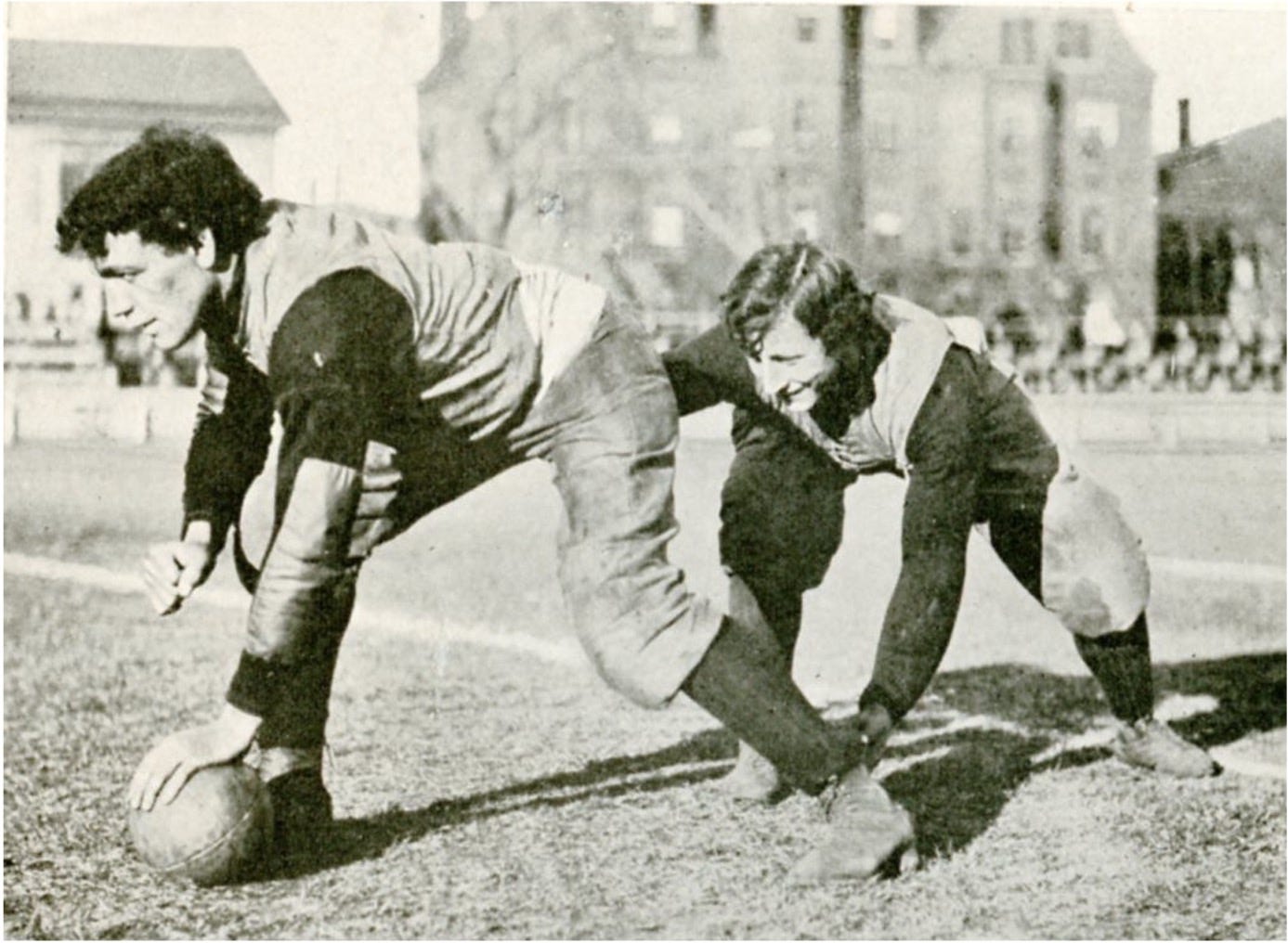Today’s Tidbit… IFA Rule #14 Scrimmage Ball Handling
This is #14 in a series covering football’s original 61 rules adopted by the Intercollegiate Football Association in 1876. We review one rule each Friday.
As covered in the discussion of Rule 12, ball movement in rugby of the 1870s primarily came from driving the scrum toward the opponent’s goals and kicking the ball downfield from within the scrum. Heeling the ball back to be picked up by a teammate behind the scrum was not illegal but was frowned upon. While the latter was an unwritten rule, rule 14 explicitly banned picking up the ball in the scrum.
Rule 14: In a scrimmage it is not lawful for the man who has the ball to pick it up with the hand under any circumstance whatsoever.
When football switched to the rule of possession and controlled scrimmage in 1880, the snapperbacks or centers continued snapping the ball by heeling it back. Moreover, defensive players could still slap, push, or otherwise physically engage the offensive forwards (aka linemen), including the center. To protect the center and ensure his ability to snap the ball, the teammates positioned to his right and left tried to protect him from the opponents, so they became known as the guards.
When heeling the ball with the foot, the snapperback rolled it back on its side. Due to the jostling, snappers began steadying the ball with their hands while still snapping with their foot. Snappers transitioned to snapping with their hands rather than their foot around 1890, but they continued rolling the ball on its side because picking it up in the scrimmage remained illegal, per rule 14.

Centers began picking up the ball around 1893 to 1894 when John Heisman coached Buchtel, now Akron. He had a tall quarterback who sometimes struggled to pick up the rolling ball, so Heisman instructed his center to lift the ball and toss it to the quarterback. Though illegal, Buchtel was not penalized for doing so. Just as blocking violated the rules when it began, snapping via a short toss to the quarterback was allowed, leading to long snaps to tailbacks and punters, direct snaps to quarterbacks with their hands under center, and shotgun snaps.
For previous stories in the series, click Intro | Rules #1 Drop Kick | #2 Place Kick | #3 Punt | #4 Goal Posts | #5 Goal | #6 Goal ≠ Punt | #7: Scoring | #8: Dead Ball | #9: Touchdown | #10: Tackle | #11: Scrimmage | #12: Ball Handling | #13 Dead Ball
Football Archaeology is reader-supported. Click here to buy one of my books or otherwise support the site.


